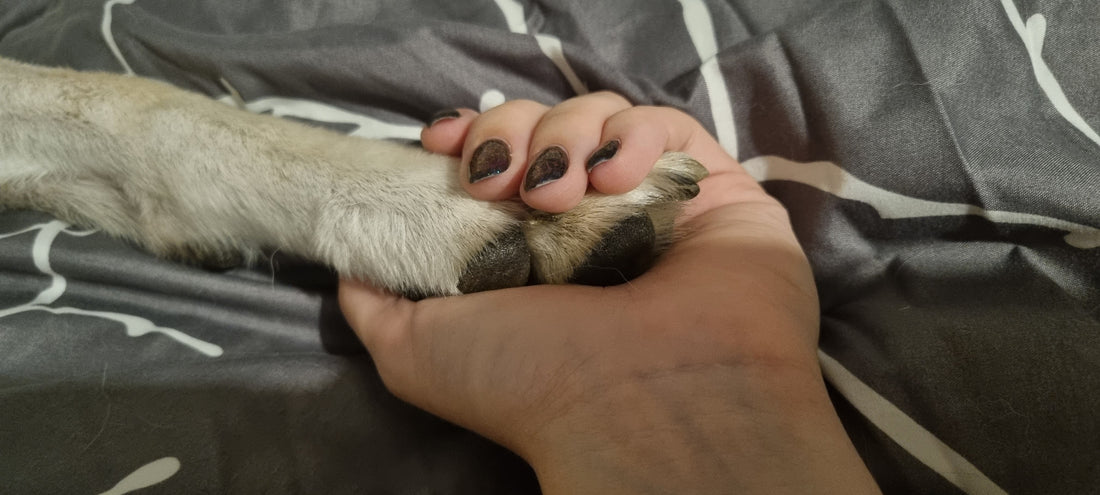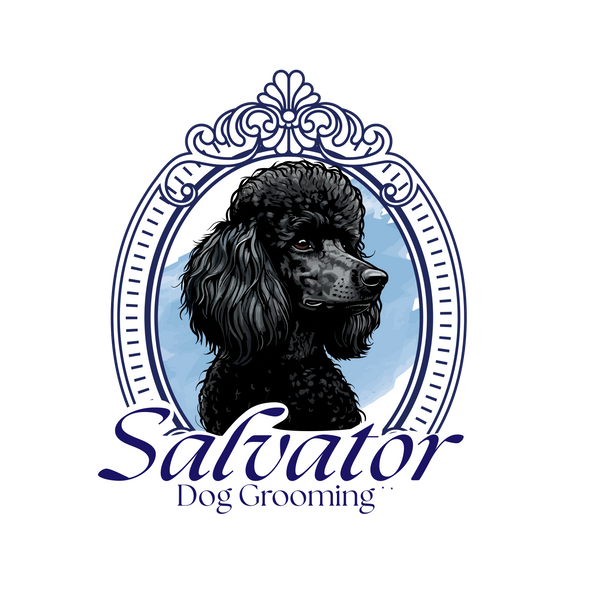
Cutting Dog's Nails - Everything You Need to Know
Trimming your dog’s nails might not be the most glamorous part of grooming, but it’s one of the most important. Overgrown nails can cause discomfort, affect your dog’s posture, and even lead to painful health issues over time. Yet, many dog owners feel nervous about cutting their pet’s nails, worried about trimming too short or causing distress.
In this guide, we’ll walk you through everything you need to know about dog nail care. Why it matters, how often to trim, and tips for making the process stress-free for both you and your pup. With the right approach, nail trimming can become a simple and positive part of your dog’s grooming routine.
It can be tricky, and is often the scariest part of grooming for newly qualified groomers, but if you wanted to trim your dogs nails yourself, here is everything you need to know.
Why do we cut them?
Dogs' nails will continuously grow, and whilst some larger and heavier dogs may wear them down well when walking on hard surfaces, most dogs will need us to trim their nails to an appropriate length. It is important to keep the nails as short as possible for the health of the dog. Nails that have grown too long can curl around into the skin on the foot of the dog, or push on the ground causing deformity to the dogs toes. Both of these things are painful and can lead to further issues.
That being said, there is a soft cuticle containing blood vessels and nerves within the dogs nail, this is called the quick. We do not want to cut this if possible, as it will bleed. This can be avoided with proper technique. This is the pink section that can be seen on white nails. Some dogs have black nails (or a mixture of the two), where you cannot easily see the quick.
Selecting appropriate equipment
There are three main styles of nail clippers:
1. Guillotine clippers. These clippers have a hole you pop each nail in before squeezing the arms to bring a blade down. It is harder to see what you are doing with these and you have less control, meaning they are not the best option for a professional groomer.
2. Plier-style clippers. Plier-style clippers look like a pair of pliers and allow you much more control and a precise cut, the preferred option for a professional groomer.
3. Electric grinders. These can be used as well as one of the above options to smooth the nails after cutting, or for some pets who cannot tolerate clipping at all.
It is important to select the appropriate nail clippers for the job, as well as the three types of clippers, for the plier style clippers there are also three sizes available
1. Small nail clippers are perfect for puppies, tiny Chihuahuas or Yorkshire terriers. Can also be handy for cats or small animals and look like tiny scissors.
2. Medium nail clippers are the most used size and are suitable for a range of dogs from shih tzus all the way up to golden retrievers
3. Large nail clippers are for big dogs with thick and strong nails, such as a German Shepherd. If you are struggling with the medium nail clippers to cut, these will be more appropriate.
How to cut the nails
1. Stand in front of the dog
2. Hold their foot up in front of you, ensuring it is within the natural movement for the dog and they are comfortable. Holding the foot backwards means you cannot get a clear view of the quick, so it is not the best way to trim the nails.
3. Use your thumb or finger to push back hair on fluffy dogs so you can clearly see the nails and look for the quick, or assess the shape and length of the nail.
4. Work methodically starting from the outside nail and working your way across all 4 on the toes - and don’t forget the dew claw on the inside of the leg!
5. Ensure your nails clippers are horizontal, clipping with them facing up or down means you are more likely to catch the quick
6. Hold your nails clippers at a 45 degree angle with the top of the clipper towards the dog, the quick grows into a point and this will allow you to trim close without cutting it
7. Gently squeeze the clippers and gauge the dogs reaction, if they are generally calm and begin to cry or pull away - reassess you may be cutting too much off. This is especially helpful for dogs with black nails where you cannot see the quick.
8. If the dogs reaction does not change squeeze the clippers to cut through the nail
What to do if you catch the quick
Don’t panic! Both you and the dog will be okay, simply use a coagulant such as a styptic powder (trimmex is a popular option). Take a small amount of the powder and hold it on the end of the nail which is bleeding for around 30 seconds, it should stop quickly.
If this does not stem the bleeding a silver nitrate pen can be used with the same technique, this is a little stronger than the styptic powder but is not as comfortable for the dog, hence why it is used as a secondary method.
Try not to let the dog run on a hard surface afterwards as this can cause the nail to begin bleeding again.
What to do if you are not comfortable?
If even after reading this blog you still don't feel up to the challenge, contact your local groomer who will be more than happy to complete the task for you.
